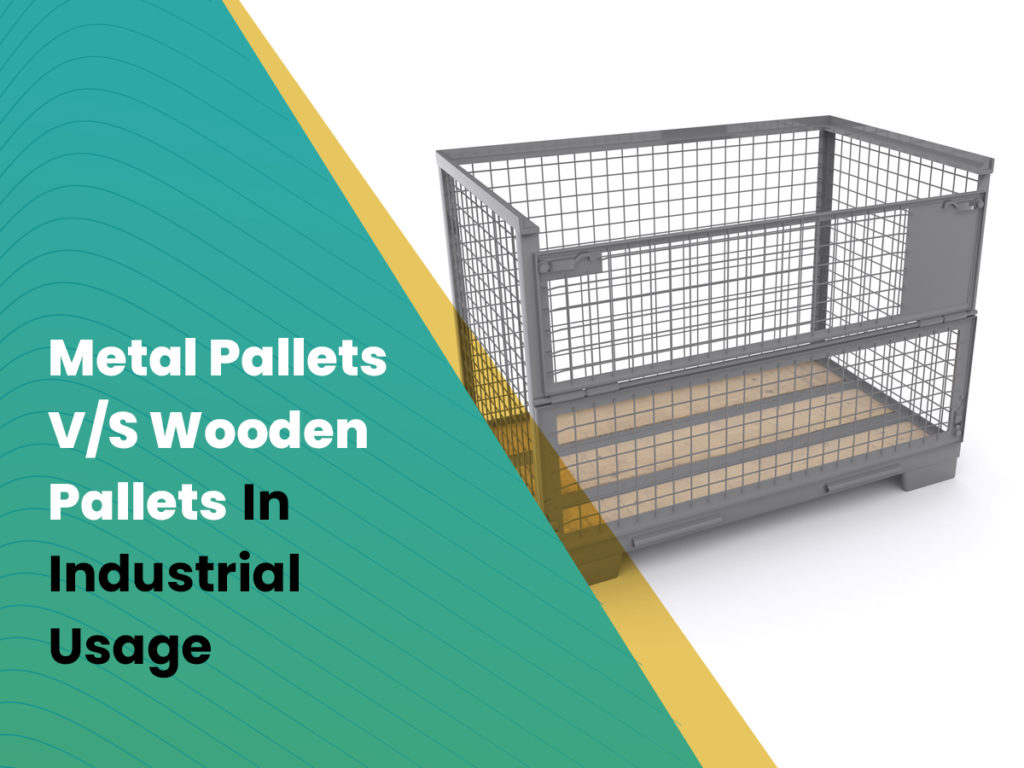
What Are Pallets?
Pallets are an essential piece of material handling equipment because they allow forklifts to reach various items quickly. They also play a significant role in reducing the amount of damage and loss of things that occur during transit.
If you’ve never used shipping pallets before, you’ll be pleased to learn how simple it is to get started. It doesn’t matter how big or tiny the goods are; pallets can be utilized to store them all.
Almost everything you buy, whether it’s for your home or for your business, has been transported there on a pallet. Across the globe, forklifts rely on pallets to quickly load and unload freight because of their simple design.
Pallets can be made from various materials, including wood, plastic, and metal. Ninety-five percent of the world’s pallets are made of wood, including wood by-products. The remaining 5% of pallets are made of plastic or metal.
All About Wooden Pallets:
Wood is an excellent choice for most shipping and warehousing applications when hygiene is not primary. Pallets made of wood are affordable, universally available, and environmentally sustainable. Wooden pallets are the most cost-effective option, so it’s no surprise that they’re the most popular.
The opportunity to utilize wooden pallets is driven by the requirement to be competitive, as the final consumer must absorb every expense of production and delivery.
Pallets benefit from the unique properties of wood in various ways. When it comes to making custom pallets, it’s simple for manufacturers to use lumber cuts to the correct dimensions.
Additionally, using larger boards or switching from softwoods like pine to hardwoods like oak can yield a range of different strengths for the wooden pallet.
Because of its rapid response time and inexpensive start-up costs, wood has a distinct advantage in creating personalized designs.
Advantages and Disadvantages Of Wooden Pallets:
- Customizable, lightweight, and versatile, wood pallets may be reused or resold, making them ideal for both storage and transportation.
- There are several drawbacks, including the fact that wood pallets are more sensitive to bacterial or chemical contaminations, and they are harmed when wet.
What Are Metal Pallets?
They may be strong and inexpensive, but wooden pallets have their limits. Metal pallets are a superior option if you require your pallets to hold more than 4,000 pounds or if long-term durability is essential to your organization.
Metal pallets are frequently preferred over other types of pallets in situations when pallets must be stored outside and exposed to the elements, such as rain and UV rays.
Unlike wood and plastic, metal can operate at the broadest temperature range. Metal pallets are ideal for areas where flammable products are present.
Even under severely cold conditions, metal outperforms both plastic and wood, which become more fragile. These metal pallets can also be found in cleanrooms due to their low susceptibility to contamination and ease of cleaning.
Use Of Metal Pallets In Industries & Warehouses:
Steel and aluminium metal pallets are the most frequent options. In the end, it comes down to which is more important to you: cost or weight. Aluminium pallets are more expensive, but they’re the go-to choose for air freight shipments that require a pallet that’s both light and robust.
The cost of pallets has an impact on the final price clients pay. Because aluminium pallets are lighter than wood pallets, they save money when shipping by air. Unlike steel pallets, aluminium may be used in areas where moisture is present, as it will not corrode like steel pallets.
Steel pallets offer the best value for businesses that need strength and durability without having to worry about air freight rates or constant dampness. A closed-loop supply chain should use aluminium and steel pallets to save money in the long run.
Advantages Of Metal Pallets:
- A metal pallet is far more sanitary than a wooden pallet since it is resistant to insects, recyclable, and reusable.
- Metal is more reliable, heavy duty and long lasting for all kind of applications.
7 Difference Between Metal Pallets and Wooden Pallets
1) Safety in pallet
Metal Pallets: Metal pallets provide excellent safety due to their indestructibility, non-contamination, and ease of decontamination.
Wood pallets: Because of the ease with which they can be broken, the splinters and projecting nails they produce, and the comfort with which they can be contaminated and decontaminated, wooden pallets offer less safety than metal pallets.
2) Cleanliness
Metal Pallets: Steel is a low-maintenance material that keeps its shine for a more extended period.
Wood pallets: Splinters, bugs, and other pollutants make it difficult to keep wood clean.
3) Repair and Maintenance
Metal Pallets: Maintenance-free metal pallets come included with many years of manufacturer’s warranties.
Wooden Pallet: The lifespan of wooden pallets is significantly shorter than that of metal pallets, lasting for several years.
4) Fire Hazard
Metal Pallets: Fireproof to the core.
Wood pallets: It Burns quickly and can be used to feed an already burning fire.
5) Climatic Temperature
Metal Pallets: For the most part, metal pallets can handle any type of climate change, except scorching climates, in which the metal can become a little hot.
Wood pallets: Cold weather causes wood to become rigid and brittle, but mild and hot weather has little effect on wooden pallets.
6) Design flexibility
Metal Pallets: Pallets made of steel can be customized to hold a wide range of heavy products using simple, modular attachments.
Wood pallets: Customized pallets can be produced to order, but the process might be lengthy.
7) Working with ASRS equipment
Metal Pallets: Material handling conveyor systems’ conveyor belts have no problems transporting metal pallets, making them ideal for use with ASRS equipment, whether wholly or semi-automatic.
Wood pallets: Using wooden pallets in an ASRS environment is not recommended due to the risk of jamming the conveyor system’s expensive parts due to the pallets’ tendency to sag out of the square.
Your specific requirements and financial constraints are the most important considerations when choosing a pallet.
If you need to retain or transport something, think about what kind of material would be most appropriate.
Determine which sub-material will best meet your financial, weight-bearing, and storage requirements before moving on.






